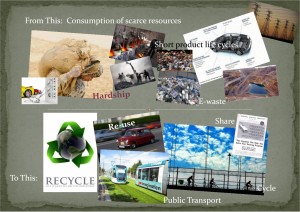I’m really beginning to love EV’s. Regardless of how they are powered (hybrid/battery only etc.), the humble electric motor seems to be well up to the task of propelling us. In fact it is extremely well suited for use in transport applications as the motive source. An electric motor develops it’s max torque pretty much from the get go, meaning excellent acceleration potential, provided the size of the motor is suitable to it’s task. And that it get’s enough juice. The technology available nowadays, both battery and electric motors, in the hobby (as opposed to toy) side of R/C cars is really stunning in comparison to only a few years ago. In fact there are a lot of committed hobbyists who formerly only raced with petrol engines who have now converted to purely electric set-ups. Will this shift be mirrored in full size cars? Already we’re seeing some interesting cars available now, not just prototypes or showcars. And thankfully they’re a million miles away from the G-Wiz/REVA .
Tesla and Fisker are making EV’s sexy, Honda have made a huge step in the right direction with their CR-Z. Then there’s the more radical side of EV’s which is more towards the cutting edge and also more centred around personal transport. At the cutting edge side of things we have the TTZero – it’s the Isle of Man TT motorcycle race except on battery powered, electric motorcycles.
http://www.dailymotion.com/video/xds1lx_tt-zero-iomtt2010-isle-of-man_auto
Whilst not exactly pretty you know when you’ve been Tango’d. This vehicle addresses the fact that most of us when driving anywhere, except on a family outting etc., usually drive alone. We have a four/five/seven seat vehicle to carry one person……Stupid. The future of the automobile lies in making in occupy a significantly smaller footprint to accommodate one person only and their luggage. The majority of car journeys can be made in vehicles like that. Their production would consume significantly fewer resources, they’d be lighter so need less motive power, would place a lower demand on the road infrastructure and would allow people to get around, in the absence of a credible public transport system, in a much more sustainable fashion.
The ultimate in EV’s – electric bicycles.
[youtube http://www.youtube.com/watch?v=tzsHFka92X8?rel=0&w=480&h=390]
Recumbent trikes fitted with an electric assist or all out electric drive could revolutionise personal mobility. Or better yet, just buy a good old fashioned bicycle and pedal damn it. The ultimate sustainable form of personal transport. And it’s good for you.
* Disclaimer – Please note I’m not affiliated to Niner Bikes or Unicycle.




Recent Comments